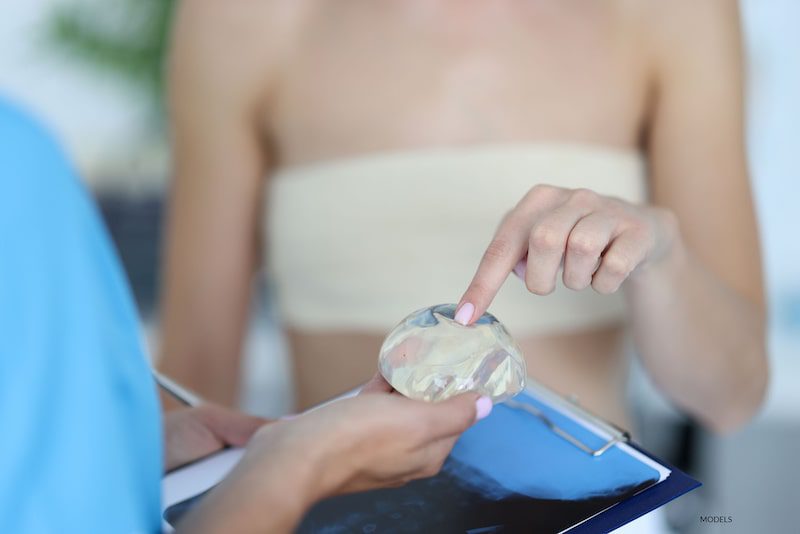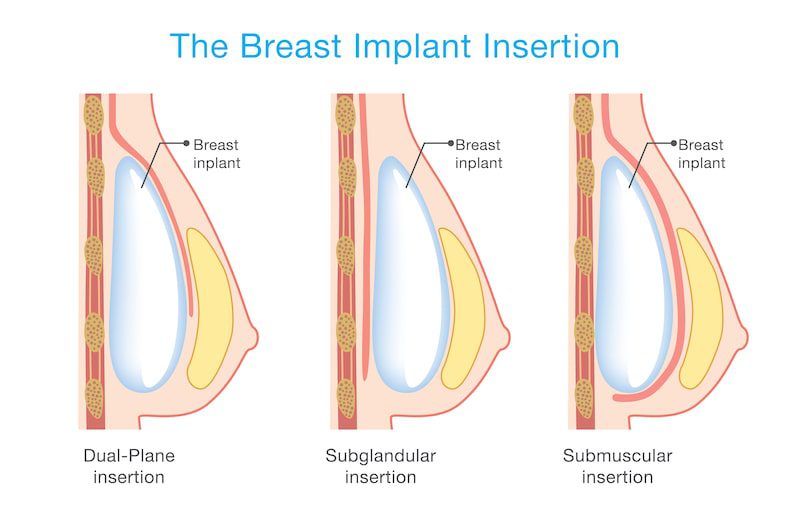Going Bigger? Learn More About Your Breast Implant Options Today
Uncategorized | The Office of Dr. Vincent Hung
4 Minute Read:
Many women who decide to undergo breast augmentation are unaware of the complexities involved with this procedure.

Because breast implant materials and surgical techniques have improved over the years, more options are now available.
Educating yourself about these advances is wise before scheduling a consultation with a cosmetic surgeon.
Create a List of Questions for Your Doctor
A consultation is an essential part of the plastic surgery experience. During this initial meeting, you’ll have the chance to discuss the breast implant’s size, shape, position, and material options, as well as where and how large the incisions will be.
Most importantly, you’ll learn the best approach according to your body type and cosmetic goals.
While your plastic surgeon will have a list of questions to ask you about your goals and desires for breast enhancement, this is also the time for you to ask questions of your own. Some helpful ones might include:
1. Should I choose saline or silicone implants?
Breast implants are available in saline (sterile saltwater encased in a silicone shell) and silicone (cohesive gel encased in a silicone gel). There are pros and cons to both.
The benefits of saline implants are that they are usually less expensive and require smaller incisions (as they are filled during surgery), leading to less scarring.
However, saline implants are more prone to rippling, which is when the edges of the implant can be seen or felt through the skin. Additionally, some women feel as though saline implants are not as “real” looking as silicone implants.
Alternatively, the benefits of silicone implants are that they typically look and feel more natural — or more like actual breast tissue. However, women with silicone implants have a higher risk of developing capsular contracture, a hardening of the scar tissue that naturally forms around breast implants.
Leaks are easier to detect with saline implants than silicone, with MRI imaging typically needed to diagnose a ruptured silicone implant.
2. Do I have enough natural breast tissue to accommodate a large breast implant?
Women with very small breasts may not have enough natural tissue to cover a large implant and tend to do better with a more subtle increase in size. Placing the implants under the muscle (submuscular placement) is often a good option in these cases.

3. Will breast implants interfere with my physical performance?
If you are physically active, such as an athlete or dancer, you may be advised not to attempt a dramatic size increase, and submuscular placement may also be recommended. One exception to submuscular placement in athletes is for bodybuilders, as pressure on the muscles can displace the implants.
4. What happens if my breast implant ruptures?
If you have saline implants, you should be able to spot a rupture easily, as the breast will essentially deflate. If you see changes in the shape of a silicone implant, call your surgeon to discuss obtaining an MRI and exam.
In either case, you will need breast revision surgery to correct this complication.
5. Will I still be able to breastfeed in the future?
If you plan to have children soon, now might not be the right time to have breast augmentation surgery, as pregnancy and nursing may adversely impact the quality of your results.
However, if you plan to start a family later down the road, discuss these plans with your surgeon. Most skilled surgeons can preserve the milk ducts by using the appropriate techniques.
6. Why are gummy bear breast implants textured?
Anatomically shaped gummy bear, or teardrop implants, are made of a super-cohesive silicone gel and come in a variety of natural breast shapes. Texture is added to the shells of these implants to help prevent them from rotating in the breast pocket and becoming distorted.
7. What are my breast implant incision options?
Depending on the size and type of implant you choose, the following incision techniques may be used:
- An inframammary incision runs along the bottom of the breast in the crease and can accommodate larger implants.
- A periareolar incision is made along the lower half of the areola and may conceal scars well, but is not always advised for patients considering breastfeeding in the future.
- A transaxillary incision is made within the armpit and is generally reserved for saline implants (since the implant is tunneled through to the chest).
Breast Augmentation in Pasadena and Newport Beach, CA
Dr. Vincent Hung is a board-certified plastic surgeon providing a wide range of personalized breast procedures, including breast augmentation in Pasadena, California. To learn more, call his office at (626) 623-7135.
Dr. Vincent Hung is also committed to customizing breast augmentation procedures for his patients in Newport Beach! Call us today at (949) 415-5195.
